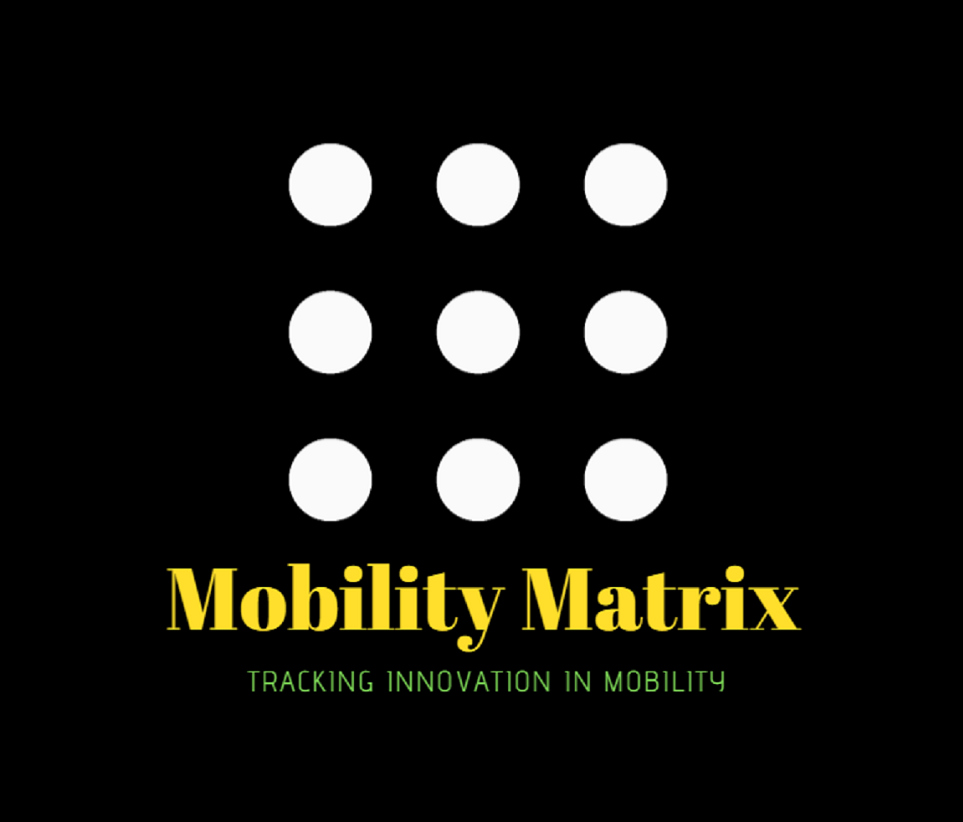
These are the news that made headlines this week in the field of Autonomous Vehicles, Connected Vehicles, Micromobility, Clean Mobility, and Research:
AWS and BlackBerry join forces
Amazon Web Services and BlackBerry have announced a multi-year, global agreement to develop and market BlackBerry’s Intelligent Vehicle Data Platform, IVY.
BlackBerry IVY is a scalable, cloud-connected software platform that allows the automakers to provide a consistent and secure way to read vehicle sensor data, normalize it, and create actionable insights from that data both locally in the vehicle and in the cloud. Automakers can use this information to create responsive in-vehicle services that enhance driver and passenger experiences.
BlackBerry IVY will solve critical data access, collection, and management problem in the automotive industry by applying machine learning to that data to generate predictive insights and inferences, making it possible for automakers to offer in-vehicle experiences that are highly personalized and able to take action based on those insights.
Orient and Ricardo to jointly develop next-generation battery
Singapore-based Orient Technology will design and develop next generation energy storage system incorporating elements of the advanced battery management and control algorithm technology from Ricardo.
Orient Technology is a provider of energy storage solutions. Ricardo’s wide-ranging experience in the field of hybrid and electric vehicle battery pack development has led Orient Technology to partner with the company to support the development of its next-generation energy storage systems.
The battery pack development support offered by Ricardo ranges from applying new cell chemistries and battery architectures to designing and building prototype packs and supporting customers through to full-scale manufacturing implementation. Among the key areas of Ricardo expertise that Orient Technology will utilize are in the incorporation of advanced battery state and parameter prediction: this will be based on Ricardo-developed condition monitoring, modelling and control algorithms that have been proven robust across different cell chemistries and in challenging applications.
Daimler Portland General Electric announce public heavy-duty electric truck charging site
Portland General Electric and Daimler Trucks North America have announced the co-development of “Electric Island,” a large public charging site for medium- and heavy-duty electric commercial vehicles expected to be the first of its kind in the United States. Electric Island will help accelerate the development, testing and deployment of zero emissions (tank to wheel) commercial vehicles. The nine charging stations are planned to be operational in spring of 2021.
The project will inform each company’s efforts by studying the future of heavy-duty charging, including:
- Use of vehicle chargers featuring power delivery of up to over one megawatt (over 4 times faster than today’s fastest light-duty vehicle chargers), enabling PGE and DTNA to develop best practices for cost-effective future deployments;
- Integration of heavy-duty charging technology into PGE’s Smart Grid, such as vehicle-to-grid technologies, second-life use of Daimler’s battery packs, and onsite energy generation; and
- Testing information technology opportunities like fleet and energy management by captive solutions and services.
Groupe Renault’s factory dedicated to the circular economy
Groupe Renault has announced the transformation of its site in Flins to create the Re-FACTORY, a circular economy factory dedicated to mobility with a negative CO2 balance by 2030.
The Re-FACTORY, to be realized between 2021 and 2024, will involve a large network of multisectoral partners (start-ups, academic partners, major groups, local authorities, etc.) and will be structured around four activity centres whose expertise will support the vehicle’s entire life cycle by acting on the main components of the circular economy (supply, eco-design, economy of functionality, maintenance, reuse, remanufacturing and recycling).
The 4 centres of activity are
• RE-TROFIT: this division will group together all the activities enabling the life of vehicles and their uses to be extended, in coordination with the Re-Cycle division to ensure efficient management of the flow of used parts and materials within the same site.
• RE-ENERGY: this cluster plans to develop the potential of applications arising from electric batteries and new energies to an industrial scale.
• RE-CYCLE: this division, integrating the activities of Choisy le Roi, will bring together all the Group’s activities contributing to efficient management of resources and their flows to promote the supply of parts and materials in short loops and integrate a growing share of recycled or reused materials.
• RE-START: to enhance and develop industrial know-how, but also to accelerate research and innovation in the circular economy, this cluster plans to house an incubator, as well as a university and training centre.
Hyundai Motor launches dedicated EV platform ‘E−GMP’
Hyundai Motor Group has unveiled its new Electric-Global Modular Platform (E-GMP), a dedicated battery electric vehicle (BEV) platform. The platform will serve as the core technology for Hyundai Motor Group’s next-generation BEV line-up.
From 2021, the E-GMP will underpin a range of dedicated new BEVs, including Hyundai Motor Company’s IONIQ 5; Kia Motors Corporation’s first dedicated BEV to be revealed in 2021; and a series of other models.
Designed exclusively for BEVs, E-GMP provides various advantages compared to the Group’s existing platforms, which have each been engineered predominantly to accommodate internal combustion engines. Benefits include increased development flexibility, powerful driving performance, increased driving range, strengthened safety features, and more interior space for occupants and luggage.
General Motors Signs MoU with Nikola to Supply Hydrotec Fuel Cell Systems
General Motors has signed a non-binding memorandum of understanding with Nikola Corporation for a global supply agreement to provide its Hydrotec fuel cell system for Nikola’s Class 7/8 semi-trucks. The MoU replaces the previous transaction announced Sept. 8, 2020.
Under the potential agreement referenced in the MoU, GM would engineer its Hydrotec fuel cell system to the specifications mutually agreed upon by both companies. GM and Nikola will discuss the appropriate scope of services that GM would provide for the integration of the fuel cell system into Nikola’s vehicles. It is expected that the potential arrangement would be cost plus, and that Nikola would pay upfront for the capital investment for the capacity. GM and Nikola will also discuss the potential of a supply agreement for GM’s versatile Ultium battery system for Nikola’s Class 7/8 trucks.
GM’s Hydrotec fuel cell system will be engineered at its Michigan technical facilities in Pontiac and Warren and manufactured at its Brownstown Charter Township battery assembly plant.
Ford Otosan and AVL Take an Important Step Towards Autonomous Transportation
Ford Trucks’ new F-MAX tractors with Ford Otosan and AVL “platooning” technology have successfully completed initial test drives. Ford Otosan and AVL also broke new ground in Turkey following the joint project’s platooning tests.
As the first phase of the joint R&D cooperation project is completed, the progress on heavy commercial vehicles will form a basis to making autonomous transportation come true not only in Turkey, but worldwide. Initiated last year as a research and development cooperation between Ford Otosan, AVL Turkey and AVL Regensburg in Germany, the collaboration’s results will re-define trucking.
Scania launches Electrically Assisted Steering
Scania is introducing EAS as an option on its trucks. The electrically assisted steering, according to the company, will enhance the driving experience and enable new or improved driver support systems. Together they will help reduce the mental load on drivers from handling huge vehicles such as truck combinations on busy high-ways. The EAS-based ADAS functions are active at speeds above 60 km/h, although drivers must still keep their hands on the steering wheel.
Scania’s EAS system is electro-hydraulic, speed dependent and offers functionality such as active return and compensation for side wind-induced offset. The three new functions that are made possible by the EAS introduction are the following, adding either comfort or increased safety:
LKA – Lane Keep Assist LKA is constantly monitoring the lane markings to keep the vehicle centred in the lane by utilising active steering. LKA provides support when it is activated and the activation conditions (speed of at least 60 km/h) are fulfilled.
LDW AS – Lane Departure Warning with Active Steering This is an extension to the standard LDW function. It not only detects potential lane departures but also intervenes by steering the vehicle back into the lane. Intended lane changes, when the driver makes use of the direction indicator lamp, are of course not affected.
LCP – Lane Change Collision Prevention LCP works together with Scania’s Blind Spot Warning system to avoid lane change incidents. When BSW triggers its most intense warning, by detecting for example another vehicle, LCP uses active steering to stop the lane change (even if the direction indicator lamps are activated) and bring the truck back to its former lane
Research breakthrough present Magnesium batteries as alternative to Lithium batteries
Magnesium batteries are considered a potentially safer and less expensive alternative to lithium-ion batteries, but till now they delivered limited power. But now researchers from the University of Houston and the Toyota Research Institute of North America have reported a breakthrough that would allow magnesium batteries to deliver a power density comparable to that of lithium-ion batteries.
According to a report in Nature Energy, the researchers have developed a new cathode and electrolyte – that previously was considered as a limiting factor for a high-energy magnesium battery – to demonstrate a magnesium battery capable of operating at room temperature and delivering a power density comparable to that offered by lithium-ion batteries.
Gentex and PayByCar partner on contactless In-Vehicle Payments
Gentex Corporation, a supplier of digital vision and connected car technologies, and PayByCar, a provider of transactional vehicle solutions, have announced a commercial agreement that will allow drivers to pay for gas and other essentials directly from their vehicle.
Specifically, the companies are working to ensure compatibility between Gentex’s Integrated Toll Module (ITM), and PayByCar, a payment solution that allows drivers to use their smartphone and toll transponder to fuel up at certain gas stations without using cash or a credit card.
PayByCar uses the driver’s toll transponder to identify the vehicle upon entering a participating gas station. The system immediately sends a text message to the driver, who replies with the appropriate pump number. PayByCar then turns on the pump, registers the transaction, charges the driver’s credit card, and issues an email receipt.
Gentex supplies automakers with Integrated Toll Module, a nationwide toll collection technology for factory integration into new vehicles. The system claims to combine almost all U.S. tolling protocols, providing drivers with unencumbered access to toll roads throughout the U.S. while eliminating the need for multiple transponders cluttering the windscreen.
(Based on News Reports and Press Releases )

